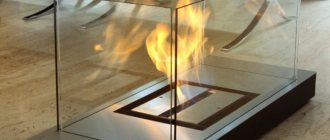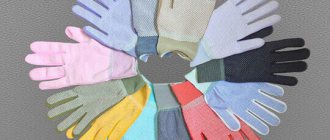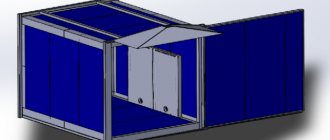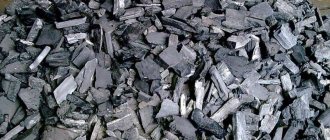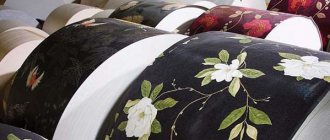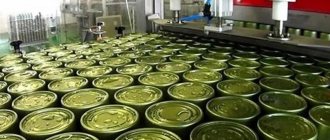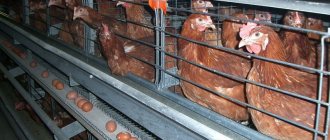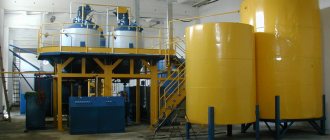Main risks
Due to the popularity of suspended ceilings and the possibility of installing them at any time of the year, there is no dependence on the season. All risks are associated only with the quality of materials, your work and the range of services. Don’t skimp on wages – invite qualified specialists. Also, choose your supplier carefully. Certificates are required.
Raw materials and necessary materials
The purchase of material is a separate article in the business plan. It’s good if there is a trusted person who has information on the market for offers in this area.
You should approach the problem yourself like this:
- search for advertisements for sale in the media and the Internet;
- analysis and comparison of prices from different dealers, taking into account timing, wholesale purchases and delivery costs.
Both fabric and PVC materials are in demand. The film provides a greater selection of shades and patterns. However, the most popular materials are simple white matte and glossy PVC. Matte ones give the effect of a perfectly executed whitewash. In the future, as your business develops, you can try to establish contacts with factories and plants for the production of materials, this will significantly reduce acquisition costs.
The cost of work is influenced by both the brand and the country of origin. The most expensive and high-quality materials are considered to be German and French-made.
Location
The minimum workshop area is 50 m². A modern ventilation system and 380 volt power supply are required. Premises for production can be rented in any area with low rental rates.
The requirements for the office are higher. It should be located as close to the center or business districts as possible. Proximity to public transport stops, availability of parking and a separate entrance from the front side of the building are important. If potential clients have difficulty finding your office, you shouldn’t expect big profits.
To receive orders and set up demonstration stands, a small room with an area of 15-20 m² is sufficient. But an office that is too cramped will arouse suspicion among visitors. In this regard, it is important to maintain a reasonable balance.
You can rent and place your office and workshop in one room. The separate location of these premises is more advantageous in terms of rental costs and prestige, but in this case, transportation costs for delivering orders may increase.
Production technology
The main elements of a stretch ceiling:
- canvas;
- profiles;
- harpoons;
- inserts and other materials depending on the type of construction.
All elements are purchased ready-made, except for canvases, which are made according to the individual dimensions of the room. Fabric production consists of the following stages:
- mixing PVC granules with additional additives and heat stabilizers;
- adding dyes and additives that are responsible for the color and plasticity of the film;
- stirring and heating the resulting mixture until smooth.
Subsequently, the film is rolled out on a special machine, which is used to set the required width and thickness of the material. The final stage is the formation of the canvas to the customer’s dimensions from a common blank.
Types of suspended ceilings
There are several types of suspended ceilings:
- Matte is a standard coating that does not have shine or reflection. It is a universal solution for various room styles.
- Glossy - a feature of the material is the ability to reflect the interior of the room, visually increasing its area.
- Satin is a special coating of the canvas that looks like matte, but at the same time looks more romantic and noble.
- Photo printing – you can place an image on film on any type of canvas. The drawing is discussed in advance, as is its location relative to the center of the ceiling.
- Multi-level - suspended ceilings, including several types of canvases in one room. This approach is relevant for zoning a room, as well as for giving a more aesthetic appearance.
Equipment
The business of producing suspended ceilings involves welding PVC film into a panel to fit the size of the room. The minimum equipment list consists of the following machines:
- A single-station machine for welding fabric with high frequency current (HFC) costs from 120,000 rubles. But it’s better to immediately purchase a two-post model. Its productivity is much higher, the average cost is 365,000 rubles.
- Air compressor with a receiver volume of 50-100 liters. Cost - 20,000 rubles.
- Tables for cutting and for feeding fabric to the machine, shelving - 80,000 rubles.
- Exhibition stands, furniture, computer, printer and other necessary office supplies. Cost – from 60,000 rubles.
- Electrical power distribution, installation of automatic circuit breakers and RCDs – 20,000 rubles.
- Special software with employee training – from 30,000 rubles.
In total, about 600,000 rubles should be planned for the purchase of equipment. You can buy something cheaper. For example, used stands or furniture. You can bring your computer from home. But something in your region costs more. We should not forget about unforeseen expenses.
Marketing and Sales Plan
At the very beginning of the business, you will have approximately two teams of workers, with an average number of orders from 8 to 12 per month. The cost of 1 square meter of canvas, on average, is 500-700 rubles. The maximum that a team can complete per month is the installation of 400 sq.m. stretch ceiling. Following from this, in the initial months of business operation, your revenue will be 300,000 rubles. Thus, the annual income will be equal to 3,600,000 rubles.
A marketing campaign should be thought out in advance, look at competitors’ advertisements, take the best from them and add your own information. More attention should be paid to Internet resources, because it is through the World Wide Web that the maximum number of customers comes.
It also doesn’t hurt to place ads in newspapers at least once a month.
Technology
The production of suspended ceilings is simple and low in labor intensity. The whole technology comes down to processing PVC film on a HDTV machine.
First, the fabric is cut to specific sizes on the table. For this, a special program is used that allows you to accurately maintain the dimensions of the sides and diagonals of the future ceiling. The standard width of PVC film is 1.5 and 2.2 meters. To obtain the fabric of the required width, the sections are welded on a high-frequency machine.
The next stage is to attach a harpoon to the glued fabric along the perimeter, with its help the stretch ceiling is attached to the base of the structure. The finished ceiling is carefully rolled up and packed in film.
Workplace and office organization
In addition to the production premises described above, you will also need an office where you can take orders and display samples of the products offered. An office will require a room of 15-20 sq.m. It is advisable that it be located in high traffic areas, then you can reduce the cost of advertising and attracting customers. In addition to standard equipment (table, chairs, computer, printer, etc.), it is necessary to install a stand with product samples in the office.
To make suspended ceilings you will need the following consumables:
- PVC film, PVC baguette, insert, harpoon;
- Spunbond No. 17;
- Metal corner;
- Vilaterm;
- Electric cardboard for machine welding;
- Packaging: cardboard boxes, film, tape.
To start production, you will need to purchase materials worth at least 150,000 rubles.
Next, in the room itself you will need to install: two tables for cutting, two tables for feeding film to the machine, racks for storing film, a heated packaging table. All this will require about 100,000 rubles.
Equipment for the production of suspended ceilings:
| Two-station HDTV machine | from 350,000 rub. |
| Air compressor | from 18,000 rub. |
| Other electrical equipment | from 25,000 rub. |
| Cutting software and staff training | from 35,000 rub. |
| Total | RUB 778,000 |
The manufacturing process of suspended ceilings
consists of five stages:
- Measurement on site. At the initial exit, measurements are taken, according to which the tension structure will be manufactured.
- Cut out the canvas. The obtained data is entered into a special program, which calculates a pattern drawing for a specific object. Using this drawing, the cutter prepares the canvas for the next stage.
- Soldering seams. The material is fed to a HFC (high frequency current) machine, which has two electrodes. At the moment of welding, the upper part is lowered under the press and a high-frequency current charge passes between them, under the influence of which the film material instantly heats up and connects the two pieces together, leaving a seam barely visible to the eye.
- Harpoon installation. Using the machine, the harpoon is securely attached to the edge of the canvas. This is a special fastening structure for connecting the film and frame baguette around the perimeter of the room. The harpoon consists of plates of hard plastic. Thanks to this design, the ceiling is easy to install, and it is possible to remove it if it is necessary to install additional light bulbs or fill it with water from above.
- Checking seams and packaging. Before packaging, all seams are manually checked for strength. Next, the structure is sandwiched with film and packaged for transportation to its destination.
Materials
The cost of the initial purchase of materials costs about 100,000 rubles. The starter kit looks like this:
- Several types of PVC film, harpoons and baguettes.
- Presspan is a special cardboard that is used for welding on a HDTV machine.
- Vilatherm. It is needed to seal the seams. The most common diameter is 40 mm, but you should have others in stock.
- Packaging materials (film, cardboard, tape).
Materials for the production of suspended ceilings
Which supplier should you choose? The main thing here is to find a middle ground between price and quality. Assess your potential consumer and his income. Analyze the range, prices and offers of competitors.
European manufacturers are leading the market for manufacturers of materials for suspended ceilings: French, Belgian and German films (they are also the most expensive).
Our people are traditionally skeptical of domestic production. Only goods from the Middle Kingdom enjoy less confidence. But in fact, you can choose high-quality material made according to European standards and technologies, both from our and Chinese manufacturers, which is in no way inferior in quality to advertised brands. Therefore, it is a good idea to enter into a supply agreement with several manufacturers at once in order to expand the price range of the offered range from affordable to premium. But it all depends on the amount of investment that you are willing to make in this project.
Materials needed to start production:
- PVC film, PVC baguette, insert, harpoon;
- metal corner, chipboard;
- spunbond No. 17;
- vilaterm (diameter 40);
- electric cardboard (presspan) for welding on a machine;
- for packaging: cardboard boxes, bubble wrap, tape.
The estimated cost of purchasing materials necessary to start production is from 100,000 rubles.
Personnel
3-4 people are enough to work in the workshop. One employee is responsible for working with the computer and cutting the fabric. 2-3 people are engaged in welding, fastening the harpoon and packaging. Although at the start, in the absence of a large number of orders, 2 people can handle the work. It all depends on production volumes. Despite the simplicity of the technology, qualifications and experience are important.
The office can be run by one person. His responsibilities include working with clients and placing orders. If there are few orders, measurements at customers’ premises can be carried out by one of the craftsmen working in the workshop. If your workers are constantly busy in production, you need to hire a measurer.
It is much more convenient for clients to receive all services from one company - this means both the production and installation of suspended ceilings. It is better to immediately organize a team of workers who will install the structures. This will entail additional costs for organizing a business, but the profitability will be much higher.
Stretch ceilings as a business: relevance of the idea and advantages
The relevance of the suspended ceiling business is the availability and quality of service. If 10 years ago only rich people and large companies could afford a perfectly smooth surface, today it is available to absolutely all segments of the population. The cost of installing a structure in a room of 10–15 meters does not exceed 5–7 thousand rubles, but at the same time the customer receives a ceiling of ideal quality according to individual dimensions, which requires virtually no maintenance. The service life depends on the conditions and purpose of the room. If this is a living space like a standard apartment, then the ceiling can last 10–20 years without losing its original appearance.
Despite the durability of the structure, people try to carry out repairs in their apartment at least once every 5 years, so rarely does anyone use a suspended ceiling for the maximum amount of time. This suggests that a customer who has already had this design installed before and was satisfied with everything in terms of quality and price will have an 80% chance of contacting the same company again.
Advantages of stretch ceiling business:
- High speed of work - installation of a ceiling in a room of 15–20 square meters. m does not exceed 2–3 hours. At this time, a full range of work is included, from marking to installation of lamps. A team of 2 people carries out installation in 3-4 rooms per day, which equates to 60-70 sq. m or one three-room apartment.
- Minimum costs - the customer pays not only the cost of the work, but also all materials. This means that a businessman incurs minimal financial costs while receiving maximum benefits.
- The initial stage of a business can do without many levels of administrative personnel - the entrepreneur is able to independently search for clients and inform the customer about the range of services.
- The cost of consumables, including the production of canvases for suspended ceilings, is significantly lower than what is announced to the client. Based on this, the entrepreneur’s profit is the difference in the price of raw materials and a percentage of the work of the installation team.
- Low start-up investments - the main costs at the stage of starting a business relate to the purchase of equipment for the production of canvases. The rental of premises for a workshop and the purchase of consumables are compensated by the cost of services, because the client pays almost 100% of the volume of raw materials.
Reference. An important stage in concluding a contract for the installation of suspended ceilings is the inclusion of a clause on the amount of payment. This can be 50% before the start of work and 50% after or 100% prepayment.
Documents and licenses
When registering your business, you can choose an individual entrepreneur or LLC. An individual entrepreneur operates on a simplified taxation system, but in the event of bankruptcy, you risk all your property. Registering an LLC and maintaining financial statements for tax purposes is much more complicated. But your risks are limited only by your share in the authorized capital. Your OKVED codes:
— 25.23 — production of plastic products for construction work; — 52.46.7 — retail trade in building materials; — 52.61 — retail trade for individual orders.
The production of suspended ceilings is not subject to licensing. But for your own benefit, you should conclude a contract with manufacturers or official suppliers of PVC film and other materials. On its basis, you can obtain product certificates. Their presence will allow you to work with companies that install suspended ceilings and will increase customer confidence.
Step-by-step opening plan
Planning and calculation will help determine how feasible it is to accomplish your plans. The first thing you need to start a business with is the steps to register it.
Required documents
To operate legally on a legal basis, a business must be registered. For the first steps, it is more profitable to register an individual entrepreneur (much cheaper), and reporting on this type of registration is much simpler.
The following documents are required:
- original passport and a page-by-page copy, certified by a notary;
- application for registration of individual entrepreneurs, also certified by a notary;
- payment document confirming payment of state duty;
- photocopy of TIN.
A package of documents is submitted to the tax authority.
Taking into account the professional intricacies of the work, the activity of stretching ceilings will require additional paperwork. Among them:
- certificate confirming the right to work with gas cylinders;
- certificates of compliance with standards for fabric and PVC fabrics;
- other papers confirming the safety of the materials used.
Permission to carry out activities
According to the provisions of the Federal Law “On licensing of certain types of activities,” installation work of this type is not licensed. You only need a permit to work with liquefied gas.
Registration of activities
There are two ways to register:
- LLC – in this case a legal entity is formed;
- IP – individual entrepreneurship.
Important! Individual entrepreneur is a more profitable option for a beginning businessman. Costs are minimal, and fines and various sanctions are many times less than for an LLC.
You shouldn’t think about this at the start, but under certain circumstances, an individual entrepreneur can cease its activities very quickly, and closing a legal entity means a lot of paperwork and expenses. At the same time, a legal entity incurs many expenses when closing, but part of the assets will remain with the owner, and the individual entrepreneur may lose everything.
We can add the fact that an official company often inspires more trust among customers than an entrepreneur, so registration as an LLC should be kept in mind in terms of long-term development.
Which tax system to choose
An individual entrepreneur or the owner of an LLC will have to choose which system is more profitable for him to pay taxes. There are several options that the Tax Code offers.
BASIC
The general traditional income tax system can be applied to individual entrepreneurs and legal entities. If the business owner has not decided which system he will use to pay taxes, he will have to use this system.
simplified tax system
This is a simplified taxation system in which a single tax is charged. This system can be used by entrepreneurs whose activities meet the conditions stipulated by law. The simplified tax system is characterized by reduced taxation and is easily mastered even by a businessman without experience.
You can pay according to the type of taxation “Income” (6% of income received) or “Income minus expenses” (15% of the amount remaining after deducting expenses incurred from income).
EVND
Valid for certain types of activities, which include ceiling installation work, calculated based on averages. This is also a preferential treatment, but it does not depend on profit, but is established based on the prerequisites for it.
The parameters for calculation are:
- number of personnel;
- rentable office space;
- other indicators.
The final amount is 7.5-15% and is approved by regional authorities.
How to choose a tax system
To classify an entrepreneur or LLC into a certain tax calculation system, several criteria apply:
- form of activity (IP, LLC);
- the nature of the works, goods or services;
- income levels;
- quantity of hired labor;
- asset value;
- contingent served;
- the degree of legality of all income.
Accordingly, you need to choose based on the conditions of use of each system. Services can be calculated according to the simplified tax system, OSNO, EVND, PSN, but the patent is available only for individual entrepreneurs. It is not issued only for installation work on ceilings, only when providing construction services.
Marketing
Sales of products can be carried out through two channels:
- Directly to the client. If you have a team of installers on your staff, the average cost of 1 m² is about 400 rubles.
— Sale of ceilings to dealers. This method involves cooperation with outside installation companies. In this case, the average cost of 1 m² is 200 rubles.
Experienced entrepreneurs recommend using both channels. In the case of dealers, it is necessary to have certificates and a clear tariff schedule. Once you have made a commercial proposal, contact the managers of these companies directly.
To attract private clients, you should advertise in local media. Outdoor advertising is also effective in your case. It is impossible to do without a company website. Spare no expense in promoting it, place advertisements on local platforms and any forums related to construction.
Advertising and Marketing
An important step in business is to create advertising that will bring the customer to you. The best advertising option for this business would be online advertising.
Organizing advertising in search engines, of course, takes a lot of time, but also brings very good results. It would be nice to create your own website where you can post photos of completed orders, as well as a list of all services with prices.
You can also always place advertisements in newspapers, which costs a small amount of money, but does not provide many clients. But it’s better not to put up advertising leaflets; they are not useful in this business.
Profitability
The cost of manufacturing 1 m² of ceiling is about 110 rubles. If you have a two-station HDTV machine and 100% load, you can produce 3750 m². Let’s assume that you sell 60% of your products through dealers for 200 rubles and 40% directly to the client for 400 rubles. Your profit for the month will be 638,000 rubles. After paying taxes, wages and other current expenses, net profit is in the range of 350,000-400,000 rubles.
With a starting investment of 700,000 rubles to organize a business, payback occurs in approximately 4-5 months.
Financial calculations
Investments in the project
Costs at the stage of organizing a business (prices in rubles):
- 15,000 – registration of business activities and registration of permits;
- 100,000 – conclusion of a lease agreement for premises (office and production) with the payment of a deposit;
- 100,000 – repair of premises;
- 500,000 – purchase of equipment;
- 50,000 – advertising;
- 30,000 – reserve fund.
Result: 795,000 rubles.
Current expenses
Expenses in the first month:
- 100,000 – rent;
- 500,000 – wages;
- 70,000 – utility bills;
- 50,000 – unforeseen expenses.
Result: 720,000 rubles.
Income and profit calculation
The income of an enterprise consists of the cost of services and the volume of work.
For example, a business has 5 teams of installers who install suspended ceilings up to 30 square meters. m per day.
Cost of 1 sq. m – 150 rubles, plus additional work (wiring electrical networks, installing lamps), which will ultimately amount to 200–250 rubles.
The cost of the canvas for the client depends on the area covered, but on average per film is 10 sq. m price is 2–3 thousand rubles.
Total income per day – 150 sq. m is multiplied by the conditional 300 rubles, which is 45,000 rubles.
Monthly income reaches 1,350,000 rubles excluding weekends, but many installation teams work any day because some clients cannot provide the facility on weekdays.
Net profit – 1,350,000 minus 720,000 rubles (monthly expenses) and minus 6% tax.
Result: 592,000 rubles.
This amount for the future should include equipment maintenance, repairs, purchase of consumables, employee vacations and other unaccounted expenses.
As a result, an entrepreneur can count on a net profit of 350–400 thousand rubles.
The payback of the project varies within 3–4 months, which, in turn, depends on the promotion of the project and the scale of the advertising campaign.
Thus, investments in the business do not exceed 1 million rubles, but the profit and payback period are comparable to large million-dollar projects. The production and installation of suspended ceilings is a profitable and promising business that anyone can do.
Staff
It’s good to count profit; it’s more difficult to organize its receipt. And one of the main difficulties in creating a profitable business is finding adequate workers. “Adequate” employees mean everything: qualifications (“direct” hands), efficiency, absence of bad habits, ability to communicate politely with the customer, and so on. Finding such people in today's realities is not an easy, but quite feasible task. One way could be to lure good installers from competitors. Another way is to train or literally “grow” your own masters from among young and ambitious youth. As they say, “in war, all means are good.”
No matter how much you value your employees, you must be prepared for the fact that they can safely place orders “on the side,” working for their own pocket, or, having built up a client base, simply go into their own business. As a result, you may get another competitor to your business.
And one more thing - never indicate cell numbers on business cards. telephone number of the installer. Indicate your office number and the landline phone number of your account manager. Thus, firstly, the likelihood of installers working part-time without your knowledge is reduced. Secondly, your company’s client base is maintained and increased. Thirdly, the client will reach you in any case, but the technician can simply turn off the phone, or be out of range and the client will go looking for another company.
In addition to installers, a normal company with an office will need at least an accountant, a supplier and a customer service manager.
Business Features
Are you planning to open a production of suspended ceilings? Then you should understand that this type of activity will require significant capital investment, especially at the initial stage. In order to establish film production, it is necessary to purchase special equipment.
In addition, it is necessary to take into account the characteristics of the premises where the production process is planned to be carried out. They must maintain the necessary climatic conditions and comply with production standards. Despite the considerable financial costs, the production of suspended ceilings pays off very quickly. In the future, you can count on significant profits.
general information
Just a few years ago there were practically no domestic manufacturers on the stretch ceiling market. All products were brought from Europe. Today, a large share in this segment is occupied by products manufactured in our country. Despite the fact that there are a large number of Russian companies producing suspended ceilings, experts assure that this business area is not characterized by a high level of competition. To this day there remains enough free space for beginners.
Research shows that Russian consumers do not particularly trust the quality of products made in their own country. This prejudice is wrong when it comes to stretch ceilings. The materials from which they are made are of good quality, and the absence of transportation costs makes domestic goods competitive in price.
A Russian manufacturer can reduce the cost of a product by minimizing losses associated with the storage and transportation of materials. The PVC film of suspended ceilings, which is the basis for their production, can be damaged during long-term transportation, which will lead to significant losses when importing orders.
It should be taken into account that Russian companies often cooperate with European manufacturers and adopt their experience and technologies. This feature is the key to high quality products and helps to enhance the company’s reputation.

